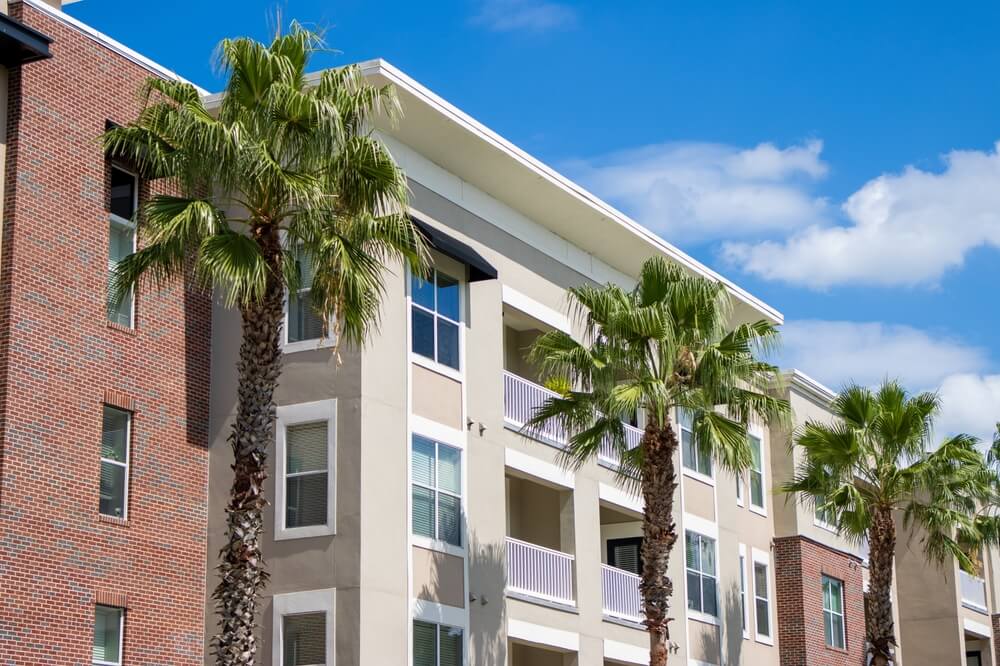
If you are not redirected within 30 seconds, please click here to continue.
Samedi: 10h – 16h HAE

If you are not redirected within 30 seconds, please click here to continue.
If you are not redirected within 30 seconds, please click here to continue.
Your guide to mass evacuation coverage for home insurance

Table of Contents
This article has been updated from a previous version.
Mass evacuation coverage helps cover costs when a government-ordered evacuation forces you to temporarily leave your home due to disasters like wildfires, floods, or other emergencies.
If there’s anything we’ve learned over the past few years, Canada isn’t immune to natural disasters. Western provinces like British Columbia and Alberta face worsening annual wildfire threats, while parts of Quebec, Ontario, and Atlantic Canada experience severe flooding.
Canada’s climate brings extreme cold, snowstorms, and ice storms. When disaster strikes, and a mass evacuation order is issued, what do you do? Will your home insurance cover your accommodation and living expenses during this upheaval?
Let’s dive into the intricacies of mass evacuation coverage in Canada.
What is mass evacuation coverage?
Mass evacuation coverage is a critical component of home insurance. It offers financial protection when a government-mandated evacuation forces you to temporarily move out of your home due to a natural or man-made disaster.
Its purpose is to lessen the financial strain on you and your family during these challenging times. Whether it’s wildfires, floods, rainstorms, nuclear incidents or other emergencies, mass evacuation coverage ensures that you have support when you’re displaced.
Related: Why climate change will drive home insurance hikes in 2025: Be prepared
How to qualify for mass evacuation coverage
To be eligible for mass evacuation coverage, your evacuation order must result from a covered named or specific peril, such as a fire, and must be issued by a civil authority, such as your municipal, provincial or federal government. You can only claim expenses if you have evacuated your home.
Read more: Failing to plan is planning to fail. Do you have an emergency savings plan?
There are three stages to a mass evacuation
Let’s break down expectations for a mass evacuation in three stages:
- Evacuation alert: If the given situation worsens but isn’t life-threatening yet, the government will issue an evacuation alert. Be prepared to leave the area at short notice. Pack essentials for a few days away from home, including clothes, important documents, and medication.
- Evacuation order: If the threat of an impending disaster becomes life-threatening, the government will issue an evacuation order. This means you must immediately leave your home. If eligible, your ALE coverage will activate at this point.
- Evacuation rescinded: Once the threat to your life has passed, you’ll receive notification that the evacuation order is lifted. If your home is damaged or lost due to the disaster and you incur additional living expenses, file a claim with your insurer.
Read more: It's emergency preparedness week: Are you ready?
Is mass evacuation coverage included in your home insurance policy?
If you have home insurance, then you’re covered for mass evacuation. Mass evacuations typically fall under the umbrella of Additional Living Expenses (ALE). ALE covers your expenses during displacement caused by covered perils. It’s similar to the “loss of use” coverage in auto insurance but tailored for your home.
When your home is impacted by an evacuation order, your mass evacuation coverage steps in to cover any additional expenses you incur during the order. However, once the evacuation order is lifted, the mass evacuation coverage (under ALE) ends, as well.
If your home remains uninhabitable after the evacuation order is lifted and you've been reimbursed for temporary accommodation, notify your insurance provider immediately.
There’s a caveat: Mass evacuation coverage is limited to the perils specified in your policy. For instance, if your home isn’t covered for overland flooding, evacuation due to such an event may not be covered either.
You can enhance your evacuation coverage by including additional perils on your insurance policy, such as flooding, earthquakes, and others.
Related: How to protect your home from severe weather
What mass evacuation coverage (under ALE) covers
Mass evacuation coverage in Canadian home insurance typically covers the following:
- Temporary housing: If your home becomes uninhabitable, it pays for hotel stays, rental apartments, or other temporary accommodations.
- Meals and incidentals: It covers extra food costs, laundry, storage fees (for your belongings during displacement, boarding or care costs for your pets (if any).
- Transportation: Whether it’s for gas for your car or public transportation fares, ALE helps.
Keep all your receipts and make a note of the purpose for each purchase. This documentation will serve as evidence to support your claim. Additionally, consult your adjuster to learn more about the timing and frequency of reimbursement.
Your insurance coverage for living expenses is not indefinite. Typically, mass evacuation coverage starts from the date of evacuation and continues for the specified period (usually a set number of days) outlined in your policy. Typically, this period is around 14 days, but it can vary.
Post-evacuation coverages
In addition to the costs associated with being unable to reside in your home, your home insurance policy may also provide coverage for several other critical aspects:
- Personal belongings replacement or restoration: If your personal belongings are damaged or destroyed due to a covered peril, your insurance will cover their replacement or restoration. This includes items such as furniture, electronics, clothing, and other possessions.
- Structure rebuilding: If your home’s structure is damaged, your policy will cover the costs of rebuilding or repairing it. This applies to the main structure (walls, roof, foundation) and any attached structures (garage, shed).
If your home wasn’t damaged, or if the damage wasn’t significant enough to render it unlivable, insurance typically won’t cover any continued expenses. If you choose not to return to a habitable home, any costs incurred will be your responsibility.
While mass evacuation coverage provides essential support, certain expenses fall outside its scope:
- Mortgage payments.
- Any lost wages because of not working due to evacuation.
- Everyday bills like phone bills, gym memberships.
- Regular utility bills (hydro, internet, cable) unless they exceed your usual spending.
The coverage limit varies based on your policy and insurer. Some policies have a daily maximum for ALE expenses.
Related: Calgary’s hailstorm cost $2.8 billion in insured losses. Is hail insurable?
Post evacuation: How to file a claim with your insurance company
After a mass evacuation, your insurance company will appoint someone—an insurance adjuster or a property appraiser — to assess the damage and estimate repair costs for your home.
Once your adjuster confirms coverage and approves the claim, you have the option of either going with your own contractor of choice or one suggested by your insurer.
You'll also have to complete a ‘Proof of Loss’ form (or statement of loss) given to you by your adjuster. This is a declaration of your claim in which you list the property or items that have been damaged or destroyed and their estimated cost.
Make sure to update your home inventory routinely to help expedite the process during these tougher times.
Read more: Does your insurance cover the full replacement cost of your home?
Some other questions you might have
Will my pets be covered under my home insurance if there’s a mass evacuation?
In most cases, pets are considered the legal and financial responsibility of their owner(s); however, some insurers can extend coverage to pets in the home. Check with your insurance company for specifics.
What about any interruption to my home-based business because of any natural disaster forcing me to evacuate?
Your existing home insurance policy won’t extend to your business loss if you need to evacuate your home because of a mass evacuation order. If your business activities are conducted from your home, you will need a separate commercial property insurance policy which may include ‘business interruption insurance’.
What if I don’t rebuild my destroyed home on the same site?
Typically, if the home isn’t rebuilt on the site where it was before the loss, your policy will cover you for your home’s actual cash value (depreciated value).
Read more: Does your home’s replacement value depreciate with its market value?
Can I claim government evacuee financial assistance and additional living expenses from my home insurance policy?
Any government financial assistance for evacuees is in addition to your insurance policy claim. You don’t have to choose one or the other.
Will my premiums go up as a result of any evacuation-related claims?
While it’s true that your history of insurance claims impacts future premiums, the insurance industry is capitalized for these events. According to the insurance Bureau of Canada (IBC), a single wildfire event typically doesn’t automatically impact premiums.
Will my home insurance cover the value of the land?
Your policy covers your home, structures, and personal belongings like furniture and electronics. However, it doesn't insure the land itself. If you choose a cash settlement, you’ll still retain ownership of the land.
What if I have a mortgage and want to take a cash settlement?
If your policy lists a mortgage lender (like a bank), they have a claim to the outstanding mortgage amount for your home. This protection is under the ‘standard mortgage clause’ in your policy.
Let’s say your home is completely destroyed and needs to be rebuilt from scratch. If your insurance policy has a $500,000 limit and there’s an outstanding mortgage debt of $450,000, the bank would get $450,000 and you would get the remaining $50,000.
But suppose the property was insured for just $350,000, while the outstanding mortgage stood at $450,000. In this scenario, the bank would receive the insurance payout of $350,000, leaving the homeowner with a remaining debt of $100,000 to settle. Importantly, the land remains the homeowner’s asset and can still be sold.
If you feel that your current ALE coverage on your home insurance policy is not enough, shop around to find the most competitive coverage that safeguards you and your loved ones.
In the unfortunate event of you and your family’s displacement, having comprehensive coverage can significantly lessen the severity of the aftermath of an untimed and unforeseen disaster. It’s always better to be safe than sorry.
Related: How is climate change affecting home insurance premiums?
Don't waste time calling around for home insurance
Use RATESDOTCA to shop around and compare multiple quotes at the same time.
Finding the best home insurance coverage has never been so easy!
Get money-saving tips in your inbox.
Stay on top of personal finance tips from our money experts!










